Hello.
This isn't going to be your standard blog post. This is not about superconductors. At all. Rather, we would just like to take the time to thank the experts who have taken the time to look through this blog and add their input.
Mr. Charles Agosta, you inspired our "Organic Superconductors" post, and your work at Clark University has continued to inspire us to look at other fields of superconductors. We're sincerely glad that you liked the blog so far.
Mr. Hide Takagi, your work in the Nature Phys. paper was one of our first contacts with scientific literature about superconductors. We're just glad that we were able to sum up your work in our blog the way that you wanted it to be interpreted. As you suggested, we will start to look at superconductivity in lithium under high pressure.
Finally, Mr. Boaz Almog, we would like you to know that your TED Talk about quantum locking was what started this initiative. You got us interested in superconductivity, and we have learned a lot over the past months.
To all of the experts who gave us their input so far, thank you. This started as a high school project, and it seems to me that the project is nearing its end. We created this blog for people to learn about various aspects of superconductors. It was a bumpy ride, but we all learned a lot from it.
On behalf of the entire blog team, thank you all.
 Cake, the secret weapon to creating a superconductor that can work at room temperature. Actually, to be more precise, a layer cake. Now don't get your knickers in a bunch, I have not finally jumped off the deep end, the layer cake method is what scientists have used in order to achieve almost every one of the Type II superconductors. The discovery and usage of this method was a triumph, they made a note "huge success". It is hard to overstate their satisfaction when they figured out that by using cake, they could get a superconductor at 35 degrees Celsius. Let's take an example superconductor, named D223. This superconductor is a silicon and copper superconductor. (As you recall, copper by itself cannot create a superconductor due to the format of its unit cell. However, in conjunction with other elements it can.)
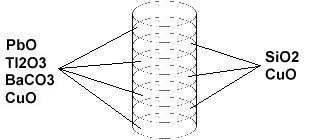 Here is a basic visual representation of the layering method for D223. To form this superconductor, a "pellet" of silicon dioxide and copper oxide and a pellet of lead oxide, dititanium trioxide, barium carbon trioxide, and copper oxide are created. Each pellet is just a layer with a specific stoichiometric ratio between the different molecules. The two types of pellets are then layered on top of each other, like a cake, with intermediary spaces between them, like frosting.
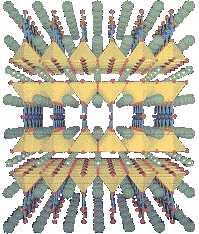 This is a more detailed version of a Type II superconductor with the layers of different elements. So, as opposed to the random assortment of atoms in a Type I superconductor, the layer cake method allows for not only higher temperature superconductors, it makes it easier to measure because of the more controlled creation. Finally, this method of creation allows for scientists to see what is working and tweak it to make a much better superconductor. If you want to know more about the importance of the crystal structure and high-temperature superconductors, click here.
"it is this interaction that leads to the electron pairing—the slight attraction between electrons—that in turn results in superconductivity" - Tahir-Kheli, Senior Staff Scientist at the California Institute of Technology
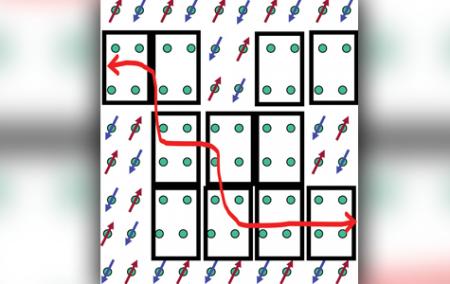 One of our first posts talked about water doping. At the end of the 2012, doping came up again in a post about the pseudogap. Well, who would have guessed it, doping has come to superconductivity once again. Most of the "high-temperature" superconductors started out as magnetic insulators that were "doped", artificially removing electrons for the original material, consequently changing the molecular structure of the original material. The result, if done correctly, is a superconducting cuprate material. But, why? Why does doping make things become superconductive? Well, a team at the California Institute of Technology have spent 5 years trying to figure that out, and the team thinks they may know. They found out that, when strontium atoms were used to replace lanthanum atoms and subsequently remove electrons from a cuprate, they were left with a superconductor. A superconductor which, when looked at on the molecular level, had formed four-centered "holes" of copper atoms aligned around the doped strontium atoms. Apparently the electrons within these "holes" (referred to the team as "plaquettes") exhibit metal-like behaivor, while the electrons outside the plaquettes acted as magnetized insulators (see image). Electrons travel freely through the plaquettes and experience slight attractive forces from the magnetized electrons. According to this paper, these plaquettes must be close together in order to trigger superconductivity, and the isolation of plaquettes may manifest itself as the pseudogap. Bear in mind that this is just one theory. However, it appears to be backed by the interesting research of this team. Definitely something worth keeping in mind.
 One of the biggest and most sensitive tools of science in today's world is the enormous Large Hadron Collider, or simply the LHC. The LHC is a particle-accelerator, a scientific tool that allows for scientists to propel charged particles, such as protons, to extremely high speeds and in contained beams to study the different structures of the subatomic world. And it uses the surreal properties of superconductors to actually accelerate these particles to these extreme speeds. How a particle-accelerator, or in this case, collider works is by using high-energy magnetic fields to propel the particles in beams, and study the effect of the their collisions in specially equipped chambers. However, the strength of the magnetic field determines the particle-accelerator's effectiveness and henceforth speed at which the accelerator can shoot the particles. The magnetic field in turn is determined by the amount of current that can be carried by the individual coils of the electro-magnets used to create the magnetic fields. The amount of energy needed to actually maintain a constant current that could potentially accelerate charged particles to the speeds at which they can be used to be studied, is quite large. Superconductors of course, are the exact solution to that problem. The very coils of the magnets used in the LHC are made of superconductive material. Because the material is superconductive, it has absolutely no electrical resistance. This is beneficial as the high current that is needed to propel particles can stay within the magnet coils for as long as the coils stay superconductive. Thus, the magnets work almost on an infinite momentum of current, and can produce the appropriate magnetic fields. The LHC itself though, must be extremely large to be able to accommodate the high speeds at which the particles travel. The circular tunnel lined with superconductive magnets is itself over 27 km in circumference! This gigantic feat of engineering has already been able to create evidence of the existence of the fabled Higgs boson, and will most likely aid scientists with even more success in their endevors with the more exotic laws and principles of our world.
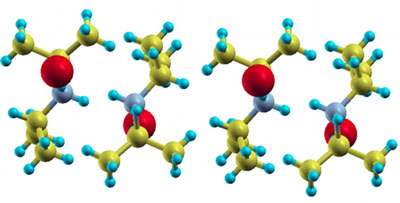 What if we could grow wires on trees? A crazy idea, I know, but it is a surprisingly plausible one. Organic compounds have shown surprising promise as conductors of electricity.
These organic molecules can be found in nature, and, do I dare say, chemists and physicists are now working together to study this neat combination of fields. At Clark University, chemists are altering the electron densities and bond lengths for materials, which are then studied for superconductive effects at low temperatures.
One example, diisopropylammonium bromide (DIPAB), is a ferroelectric compound (image above) that shows promise. When electricity is passed through the superconductor, electric dipoles in the material line up. In this way, the inter-molecular forces within the material align themselves for conducting moving electrons.
Just imagine, one day we may be growing out circuits on trees! If this isn't amazing, I don't know what is.
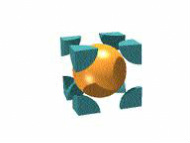 Type one elements are all somewhat conductive at room temperature. It would stand to reason then that all elemental conductors can become superconductors, but this is not the case. Gold, silver and copper, the three best room temperature conductors cannot become superconductors. All three elements have only one valence electron, which makes it easy to carry a current, so what's preventing them from getting to superconductivity? One simple word, structure. The structure of their unit cell is a face centered cube (FCC).
So what, you may say. I've seen a list of superconductors, and lead, which also has a FCC is able to become a superconductor (at 7 K).
Well, the fact that it's unit cell is a FCC is important but that is not the only limiting factor. Let me explain. A FCC has the most atoms per cell of the basic unit cells, 4. This makes them very tightly packed, leaving very little room for movement. Superconductors require flexibility within the lattice in order for the cooper pairs, which are a pair of electrons, to form (called the electron-phonon effect). The FCC cannot vibrate enough for the pairs to be created, a dampening of the electron-phonon effect.
But, then why is lead and other FCC's able to become superconductors? They can form because their modulus of elasticity is high, making them much more flexible. This prevents the electron-phonon effect from being dampened.
 Various industries from energy industry to the transportation industry are beginning to weight the benefits of incorporating superconductivity into their respective technologies. For example, the Advanced Magnet Lab in Palm Bay, Florida is trying to making wind turbines more efficient with the application of superconductive wires in the wind turbines' generators. Because of a superconductive material exhibits zero electrical resistance, electrical energy transformed from the mechanical energy of the wind turbine's rotors will be maximized in the case superconductive wires replace the current wires in placed in the wind turbines.
The property of superconductors to exhibit zero electrical resistance can be explained through what is called the BCS theory. A result of a collaborative effort by three scientists John Bardeen, Leon Neil Cooper, and John Robert Schrieffer, the BCS theory attributes this property of superconductors to electron-pairings in the crystal lattice structures of superconductive materials referred to as Cooper pairs. In the lattice structures of materials that exhibit electrical resistance, impurities and vibrations scatter these electrons and make Cooper pairs too difficult to form (electrons remain separated because it takes less energy to remain in this state than to form cooper pairs). These cooper pairs form when an electron moving through the lattice structure attracts the positively charged nuclei within the structure, creating a sort of bulge in the lattice. This bulge of positive nuclei in turn attracts another electron that was previously moving in an opposite direction towards the first electron, forming the Cooper pair. The formation of Cooper pairs allows for the electrons to avoid the impurities and vibrations within the crystal lattice and effective negate any resulting electrical resistance. The figure bellow illustrates the formation of Cooper pairs.
The inner workings of a wind turbine include a series of coils of wires around the turbine's rotor that spins in the presence of a strong magnetic field. This magnetic field is provided by stationary magnets. This produces a current which is collected in a battery or channeled via wires to an electrical power plant. However, the amount of induced current that results from this solenoid is limited to the resistance of the substance that the wires are made up of, which is usually copper. Replacing these wires for superconductive ones will boost efficiency and costs in the long run. The only problem as of now is implementing these wires into the turbines and maintaining the extremely low temperatures required for these superconductive materials to remain below their critical temperatures. The figure above shows the conventional wind turbine design with a gearbox and non-superconducting wires, and a revolutionary new design that replaces a gear-box with a direct-drive mechanism and high-temperature superconducting wires.
 Magnetic Levitation Technology, or MAGLEV for short, is a revolutionary new form of high-speed public transportation that utilizes either superconductive magnets or electromagnets to enable frictionless propulsion of railcars. Only a few commercially available MAGLEV rail-systems are in existence today. One of these systems is the Shanghai Transrapid System located in Shanghai, China. A train on this 19-mile line travels an average speed of 267 miles per hour (430 kmh). However, this system uses electromagnetic suspension (EMS) which includes the usage of electromagnets on the undercarriage of the train as a means of suspension. The type of MAGLEV technology that we are interested is called electrodynamic suspension (EDS), where super-cooled superconductive magnets are placed on the sides and undercarriage of the train cars to provide the levitation required. Unfortunately, there have yet to be any commercially-available EDS systems in the world, although Japan is reported to have been making efforts to develop such a system in its Linear Chuo Shinkansen Project.
One of the most important properties of superconductors that EDS magnetic levitation exploits is the Meissner-Ochsenfeld Effect. This property is observed as a superconductive substance is cooled below its critical temperature (the temperature required to eliminate its electrical resistance). If this cooling process is conducted in the presence of a magnetic field, the superconductor will expel all magnetic flux by inducing a current at the surface of the superconductor. This induced current creates a magnetic field that opposes the applied magnetic field. However, since magnetic flux in a superconductive substance is always conserved according to Lenz's law, a decrease in an internal magnetic field in the superconductor will lead to an increase in the exterior magnetic field and effectively cause magnetic suspension.
The EDS MAGLEV system includes not only the railcars but the tracks as well. Only the body of the train uses superconductors and walls perpendicular to the track are equipped with electromagnetic coils that run the entire length of the track. As the train passes by each section of electromagnetic coils, the train induces a current that works to provide levitation and center the train along the tracks. These coils are often referred to as guidance coils. To provide forward thrust, a linear motor system with the utilization of propulsion electromagnetic coils alongside the guidance coils is used. As the train passes through these particular set of coils, the polarity of the coils itself is alternated to pull the front of the train along the track and to push the rear of the train and provide more thrust. The entire system is essentially an intricate arrangement of temporary electromagnets and superconductive magnets that ultimately results in the propulsion and levitation of the railcars. The configuration of a EDS MAGLEV system is illustrated in the figure above.
The advantages of this particular system is that it is environmentally friendly as it produces no harmful emissions because it runs completely on magnetic properties. Referring to EDS and EMS systems, EDS is more physically stable because the magnetic properties of the train/track system will automatically correct small variances along the track. EMS on the other hand requires constant and close monitoring of track tolerances to ensure that the train will not run off its intended course. EDS is also slightly more energy-efficient for the superconductive magnets on the body of the train conduct electricity even after the supply of current is stopped. Also, only the electromagnetic coils directly involved in the pulling/pushing of the train at a given time need to be activated to maintain propulsion, meaning that only a few of these coils will be engaged at a given point in time further saving energy costs.
 Type II superconductors were first introduced in a Russian journal in 1954. Since then, Nobel prizes have been awarded for people who contributed to its understanding. For the past ~60 years, people have generally understood that magnetic fields penetrate type II superconductors. When placed in a magnetic field, the superconductor becomes pierced with small "vortexes" of electric current arranged in a regular lattice pattern (see image).
However, in 2008, a group led by Notre Dame physicist Morten Ring Eskildsen made a discovery that may alter our understanding of Type II superconductors. This group studied the "vortex lattice" formed in a certain superconductor made of cerium, cobalt, and indium (CeCoIn5) as the magnetic field strength was increased.
The general expectation is that an increased magnetic field will increase the presence of current "vortexes" through the superconductor, thereby disrupting the superconductive nature of the material. However, according to Eskildsen's team, the magnitude of penetrating currents through the material actually decreased. This new research significantly complicates our understanding of how Type II superconductors react to magnetic fields.
One answer may be the unit cell structure of these superconductors. Simply by looking at it intuitively, it is easy to think that the way that the atoms of the material are aligned may have something to do with directing the current "vortexes". Really, at this point, there is no clear answer. However, these findings by Notre Dame may very well alter our understanding of Type II superconductors.
 As you know by now this blog is all about superconductors, so I bet you're wondering, why is this post about the different types of diabetes Well, this post is not, in fact, a post on diabetes but about two different types of superconducting materials. Type one superconductors were the first type to be discovered and have a few quirky traits.
They are mostly elements and have "perfect" diamagnetism. When they enter the superconductive state, the resistance suddenly drops to zero, as shown by the picture above. Type ones are mainly metals and metaloids and form only at very, very (7 K) low temperatures. From now on we'll refer to these types of superconductors as "soft" ones, while type two will be called "hard". To access a list of soft superconductors, click here.
Hard superconductors are almost 100% man-made alloys and metaloid compounds. They were first created in 1930 but not recognized until after the discovery of the Meisner effect. These superconductors are created using the layer cake method. This makes these types of superconductors more stable at higher temperature, allowing them to be nicknamed "high temperature" superconductors (30 degrees Celsius). Hard superconductors are broken up into more specific categories based on the ratio of the elements, such as the perovskites. Due to the hard superconductors stability at high temperatures, they are much better for industrial use (Maglev trains, MRI machines) than soft ones.
Some believe that there will be a limit on the temperature that hard superconductors will be able function but as of right now we have not found such a limit. Personally, I believe that as the technology we create improves, so will the top temperature and the usability of these superconductors.
|











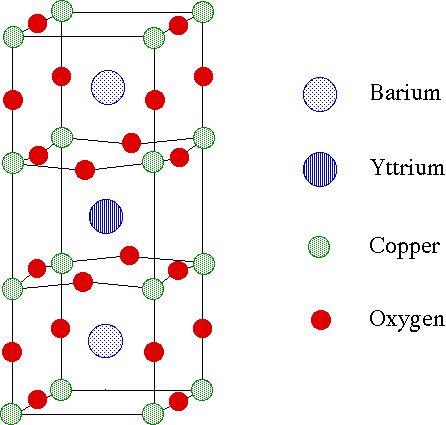

 RSS Feed
RSS Feed